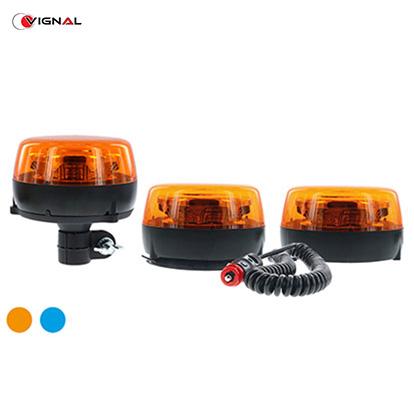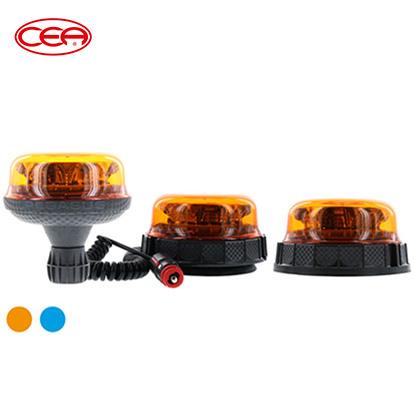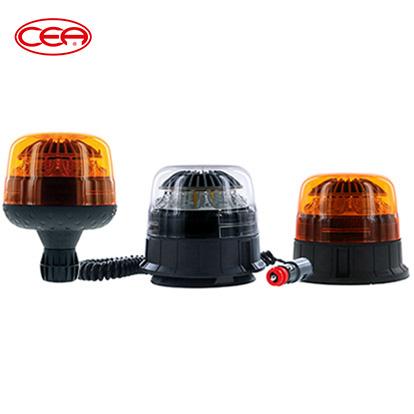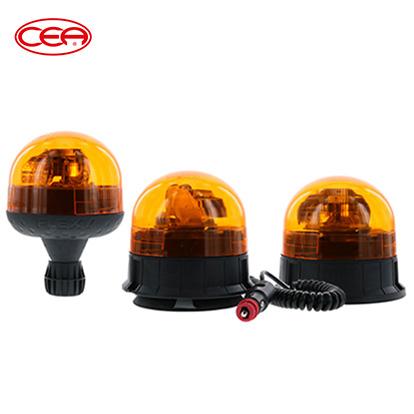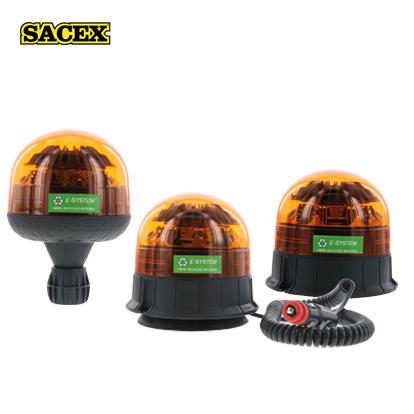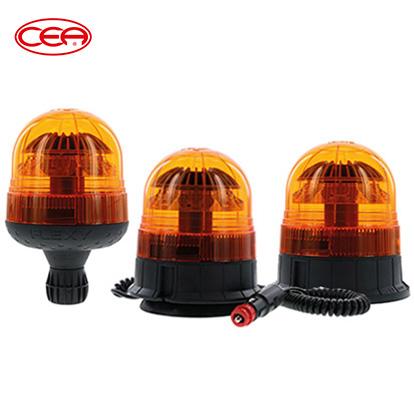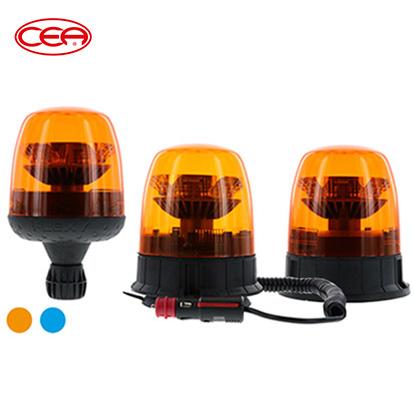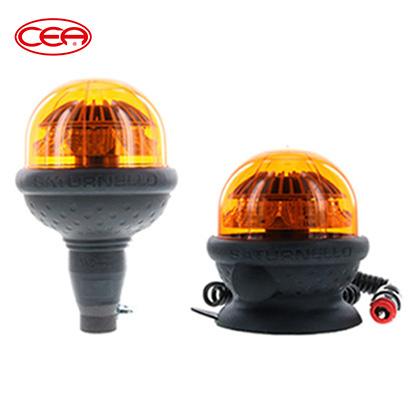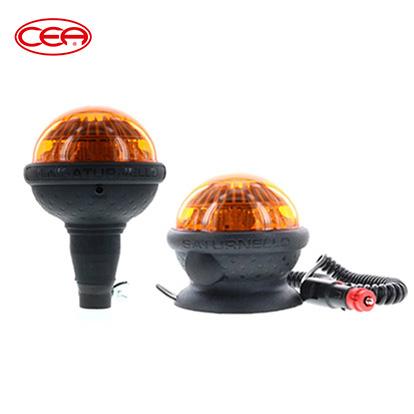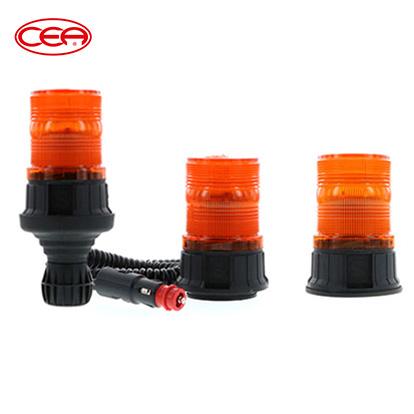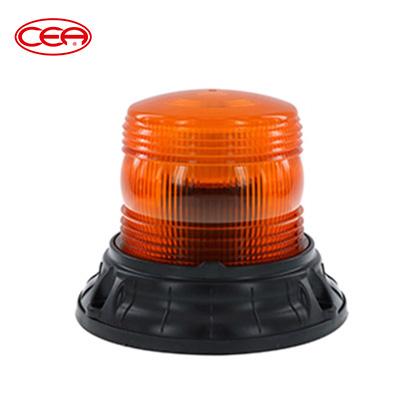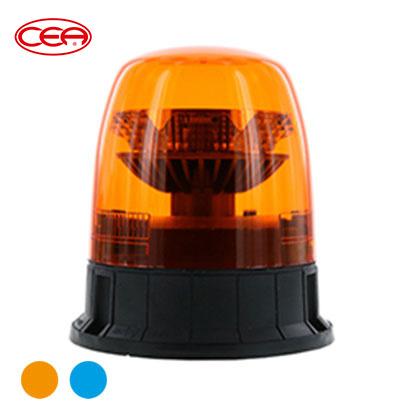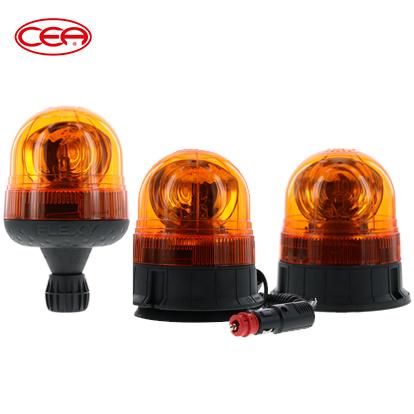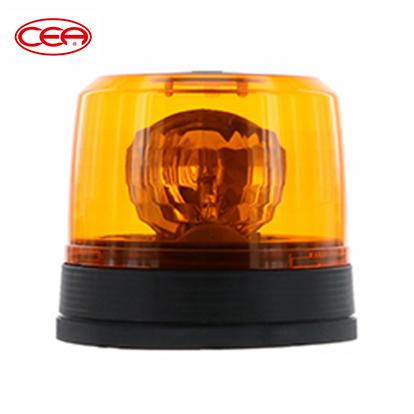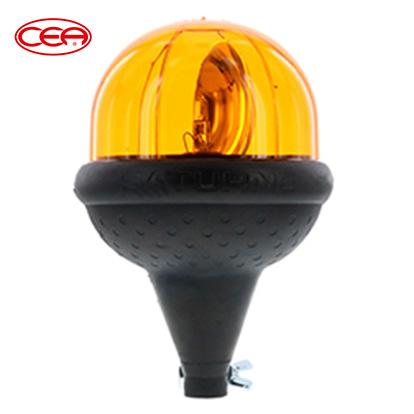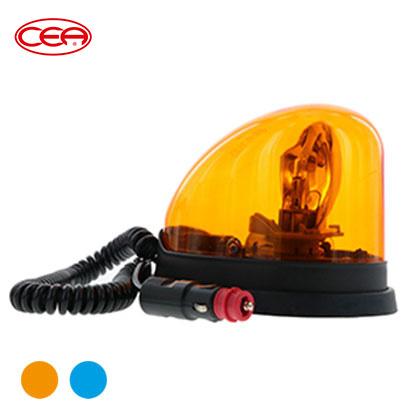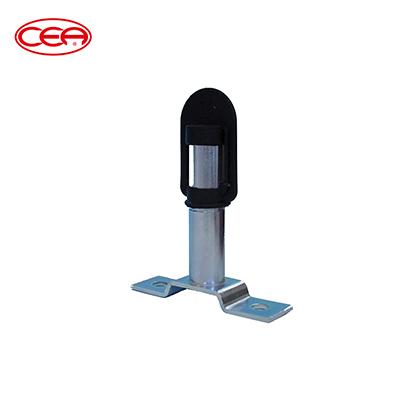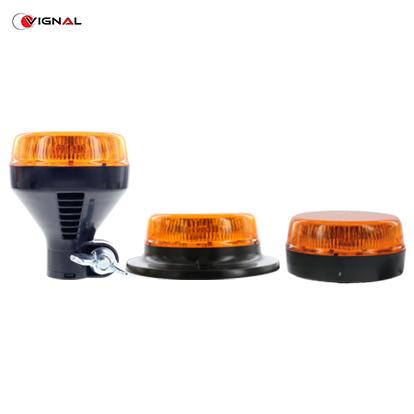
Beacons
With high luminous performances, they are available in different dimensions, shapes and LED colors.
The regulation imposes the use of flashing beacons with orange light for :
- Intervention and work vehicles at a standstill or in slow progress on a roadway open to public traffic or on an emergency lane (road vehicles, recovery vehicles, agricultural vehicles). Two lights are mandatory (front and rear) if the vehicle is not visible at 50 meters and 360 degrees.
- The regulation imposes the use of blue flashing lights for :
- Priority vehicles - police, gendarmerie, customs, firefighters... (blue rotating lights with two-stroke sirens).
- General interest vehicles with passage facilities - ambulances for medical transport, medical associations dedicated to the permanence of care, EDF/GDF vehicles... (blue flashing lights).
What type of approval do beacons for the public road network have to meet?
Beacons that comply with the ECE-R65 & TPFSL* Directive are allowed to be used on the public road network.
The ECE-R65 is the European directive for beacons. It indicates the luminous values, the distribution of the light, the requirements to be respected (e.g.: fixing...) It concerns the orange & blue beacons.
It can also be consulted on the site www.unece.org (United Nations Economic Commission for Europe)
All our beacons comply with ECE-R65 except for the PUCK and FRESNEL beacons reserved for off-road use (forklifts)
* The TFSL Directive concerns lights designed for road applications for vehicles moving at slow speed (25km/h) or at a standstill on public roads.
How are beacons classified according to ECE-R65 regulations?
Class 1: flashing light 1 intensity level only. Lights concerned: main or secondary orange flashing lights & secondary blue flashing lights
Class 2: beacon with 2 intensity levels. Lights concerned: only the main blue flashlights
What type of approval must the beacons on airport networks meet?
Only beacons that comply with ICAO (International Civil Aviation Organization) regulations are authorized to be used on the airport network.
These ICAO regulations for aerodromes (Flight 1 Annex 14) indicate the specific light frequency values to be respected.
It can also be consulted on the site www.unece.org (United Nations Economic Commission for Europe)
Some of our proposed beacons comply with the ICAO.
What other approvals do all beacons have to meet?
All beacons used on the public road network or on the airport network must comply with ECE-R10.
The ECE-R10 concerns the EMC or Electromagnetic Compatibility of an equipment, which involves
- The limitation of electromagnetic emissions of disturbances to a level that guarantees the operation of other surrounding equipment
- The guarantee of a sufficiently high resistance against external electromagnetic disturbances
The manufacturer's specifications refer to the CISPR 25 standard from 1 to 5. Our products are approved to at least class 3, which ensures that the legal standards are met. Many of our products also meet the requirements of class 5, which ensures optimal operation without disturbing electromagnetic interference to the vehicle or the product.
The CETMEF approval corresponds to the approval of the technical department for water, sea and rivers of the CEREMA, a state organization. This approval is only a part of the ECE-R10 regulation which is the only regulation to ensure compatibility with all the equipment of your vehicle.
Which mounting method should be selected to correctly install your beacons?
ISO 3 points: 100% secure fixing on a stable 3 points base
Central bolt: quick mounting because it requires only 1 hole on the vehicle & protection of the power supply wires in the M12 bolt
Pole: more secure than 1 wing nut, locking by clamping ring. Requires a pole connector
Flexible shaft: absorbs shocks thanks to its flexible base, locking by clamping ring. Requires a pole connector
Magnetic or suction cup: occasional use, 0 drilling. Holds at 200Km/h

